International Steel Prices

Foreign Imports Gain Even Greater Appeal Over Domestic Prices
Written by Brett Linton
May 5, 2022
Foreign steel imports continue to hold a competitive price advantage over domestic steel, with the spread between the two widening nearly every week since mid-March. According to SMU’s latest foreign versus domestic hot-rolled coil (HRC) price comparison, select foreign HRC prices range from $114-375 per ton cheaper than domestic prices, after taking freight costs, trader margins and tariffs into consideration. Recall that the price differentials between domestic HRC and foreign imports had narrowed since peaking last summer, with domestic prices briefly holding a competitive edge in February and March.
The following calculation is used by Steel Market Update to identify the theoretical spread between foreign HRC prices (delivered to US ports) and domestic HRC prices (FOB domestic mills). This is only a “theoretical” calculation because freight costs, trader margins, and other costs can fluctuate, ultimately influencing the true market spread. This compares the SMU US HRC weekly index to the CRU HRC weekly indices for Germany, Italy and Far East Asian ports.
![]()
In consideration of freight costs, handling, trader margin, etc., we add $90 per ton to all foreign prices to provide an approximate “CIF US ports price” that can be compared against the SMU US HRC price. Spot checks show freight for Southeast Asian imports into Houston costing between $100-110 per ton and costs for European products between $85-90 per ton. Buyers should use our $90-per-ton figure as a benchmark and adjust up or down based on their own shipping and handling costs as necessary.
Note that effective Jan. 1, 2022, the traditional Section 232 tariff no longer applies to most imports from the European Union. It has been replaced by a tariff rate quota (TRQ). Therefore, the German and Italian price comparisons in this analysis no longer include a 25% tariff. SMU still includes the 25% S232 tariff on foreign prices from other countries. We do not include any antidumping (AD) or countervailing duties (CVD) in this analysis.
Far East Asian HRC (East and Southeast Ports)
As of Wednesday, May 4, the CRU Far East Asian HRC price declined $27 per ton from the previous week to $780 per net ton ($860 per metric ton), down $55 per ton from one month prior. Adding a 25% tariff and $90 per ton in estimated import costs, the delivered price of Far East Asian HRC to the US is $1,065 per ton. The latest SMU HRC price average is $1,440 per ton, down $10 compared to one week prior and down $20 per ton from one month ago. Therefore, US-produced HRC is now theoretically $375 per ton more expensive than imported Far East Asian HRC. That differential was $351 per ton last week and $327 per ton one month prior. This is the eighth consecutive week foreign steel prices have held this price advantage. We briefly saw the opposite in February and March, when domestic HRC was $28-72 per ton cheaper than Far East Asian prices. The largest price spread between these regions was $847 per ton in September 2021, when Far East Asian prices held a considerable advantage.
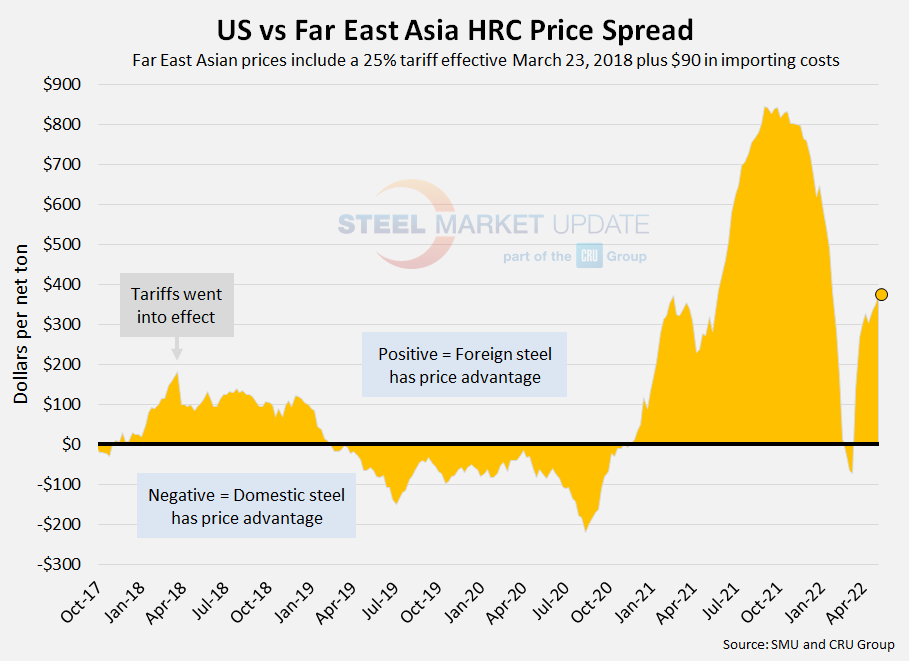
Italian HRC
CRU published Italian HRC prices at $1,171 per net ton ($1,290 per metric ton), down $48 per ton from last week and down $174 per ton from one month ago. After adding import costs, the delivered price of Italian HRC is approximately $1,261 per ton. Accordingly, domestic HRC is now theoretically $179 per ton more expensive than imported Italian HRC, compared to $141 per ton one week prior and $26 per ton four weeks ago. This is the seventh consecutive week foreign steel prices have held this price advantage. We briefly saw the opposite in the first half of March, when imported Italian HRC offered a theoretical savings of $4-98 per ton. Prior to removal of the 25% Section 232 tariff, the November 2021 spread of $577 per ton was the largest seen in SMU’s data history.
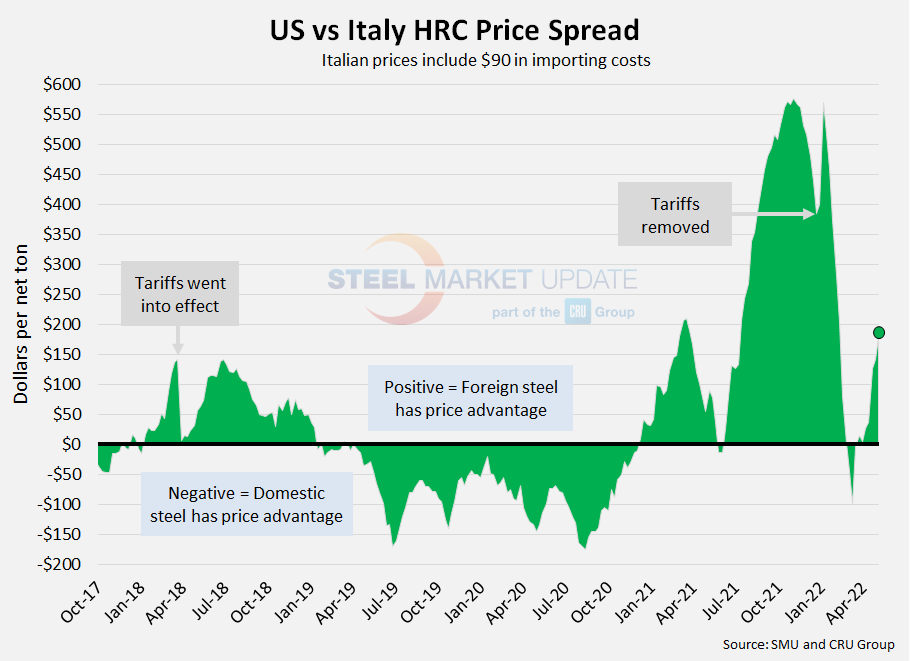
German HRC
The latest CRU German HRC price is $1,236 per net ton ($1,363 per metric ton), down $64 per ton from last week and down $179 per ton from one month ago. After adding import costs, the delivered price of German HRC is approximately $1,326 per ton. Accordingly, domestic HRC is theoretically $114 per ton more expensive than imported German HRC, up from a spread of $60 last week and $47 two weeks prior. Prior to that, we saw the opposite over the previous eight weeks, when domestic prices held the competitive advantage. One month ago German prices were $46 per ton more expensive than domestic steel. Prior to removal of the 25% tariff, the October 2021 spread of $504 per ton was the largest seen in SMU’s data history.
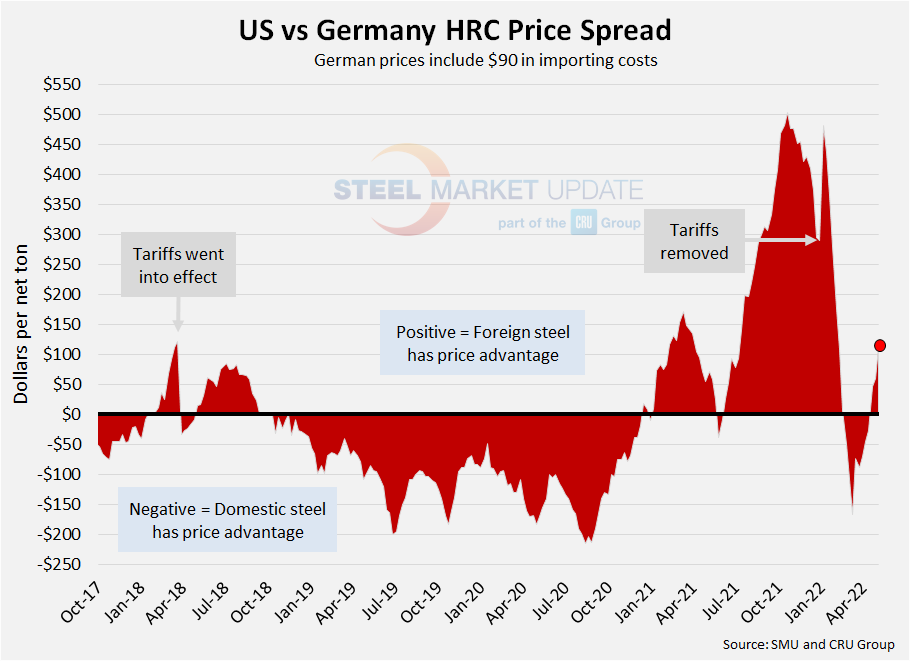
The graph below compares all four price indices and highlights the effective date of the tariffs. Foreign prices are referred to as “equalized,” meaning they have been adjusted to include importing costs (and tariffs in some cases) for a like-for-like comparison against the US price. The second graphic shows the same data but focuses on prices over the last 16 months.
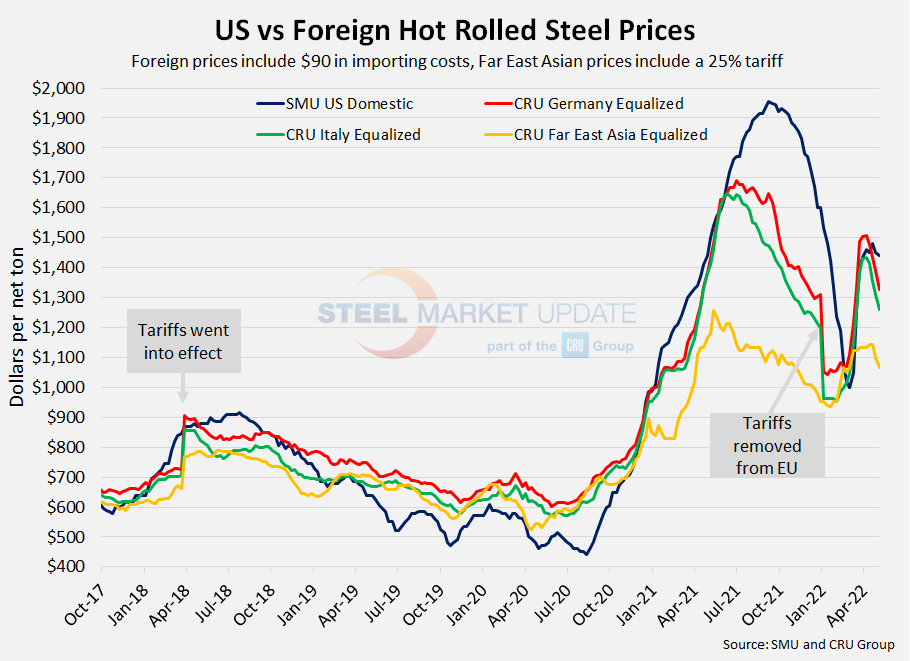
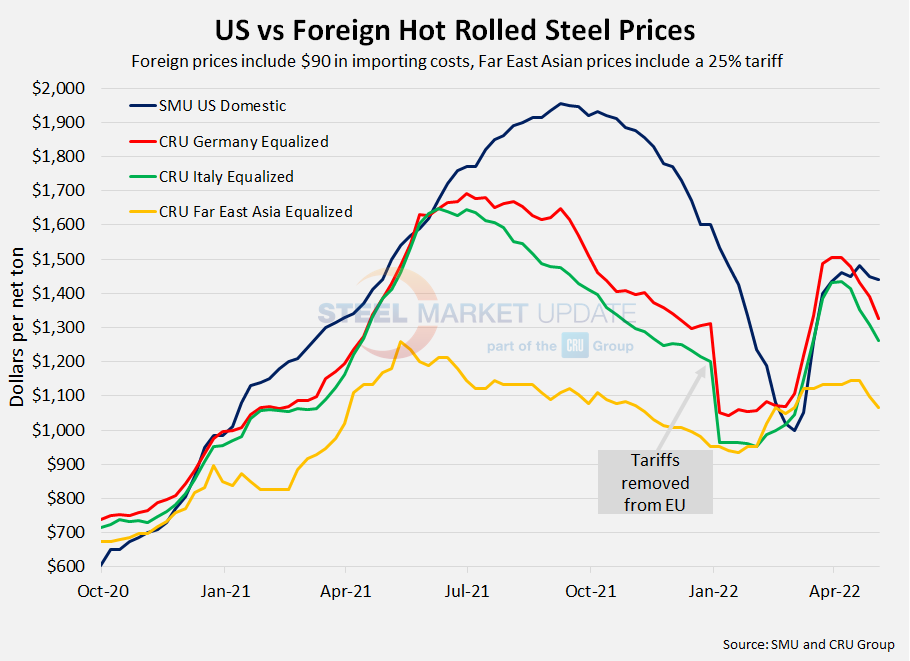
Note: Freight is an important part of the final determination on whether to import foreign steel or buy from a domestic mill supplier. Domestic prices are referenced as FOB the producing mill, while foreign prices are FOB the Port (Houston, NOLA, Savannah, Los Angeles, Camden, etc.). Inland freight, from either a domestic mill or from the port, can dramatically impact the competitiveness of both domestic and foreign steel. When considering lead times, a buyer must take into consideration the momentum of pricing both domestically and in the world markets. In most circumstances (but not all), domestic steel will deliver faster than foreign steel ordered on the same day.
By Brett Linton, Brett@SteelMarkeUpdate.com

Brett Linton
Read more from Brett LintonLatest in International Steel Prices
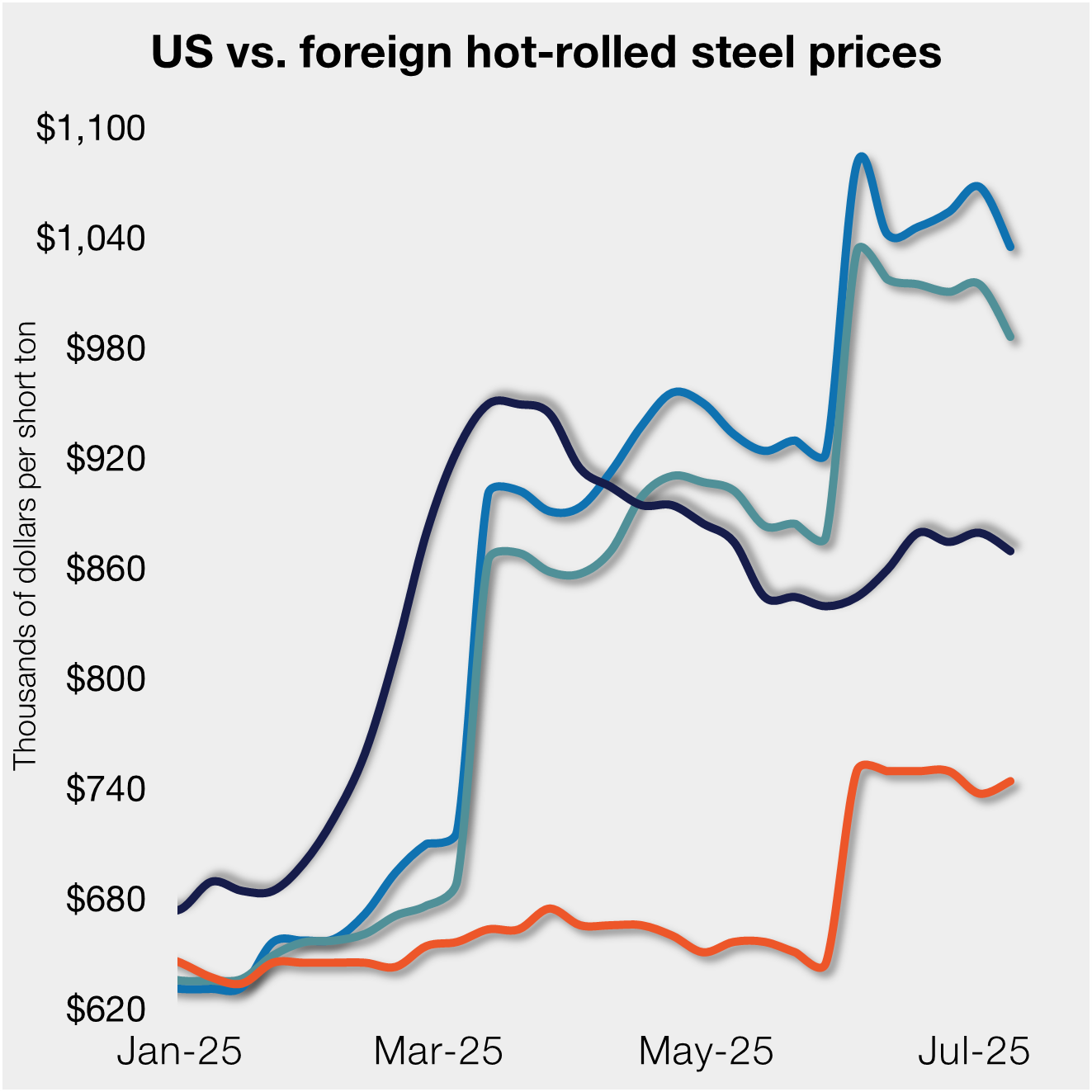
S232 tariffs keep US HR prices below imports from EU
Hot-rolled (HR) coil prices in the US ticked down this week but have fluctuated little over the past month. Stateside tags continue to trail imports from Europe, supported by Section 232 steel tariffs that were doubled in early June.

Doubled S232 tariff holds US HR prices below EU
David Schollaert presents this week's analysis of hot-rolled coil prices, foreign vs. domestic.

Higher US CR prices inch closer to EU, Japanese tags
US cold-rolled (CR) coil prices continued to tick higher this week, while offshore markets were mixed.

Stacked S232 keeps US HR prices below EU
US hot-rolled coil prices crept up again this week but still trail imports from Europe.

Doubled S232 lifts EU, Japanese CR prices over US tags
US cold-rolled (CR) coil prices edged up again this week, and most offshore markets moved in the opposite direction. But the diverging price moves stateside vs. abroad did little to impact pricing trends. The bigger impact was from Section 232, which were doubled to 50% as of June 3. The higher tariffs have resulted in […]
